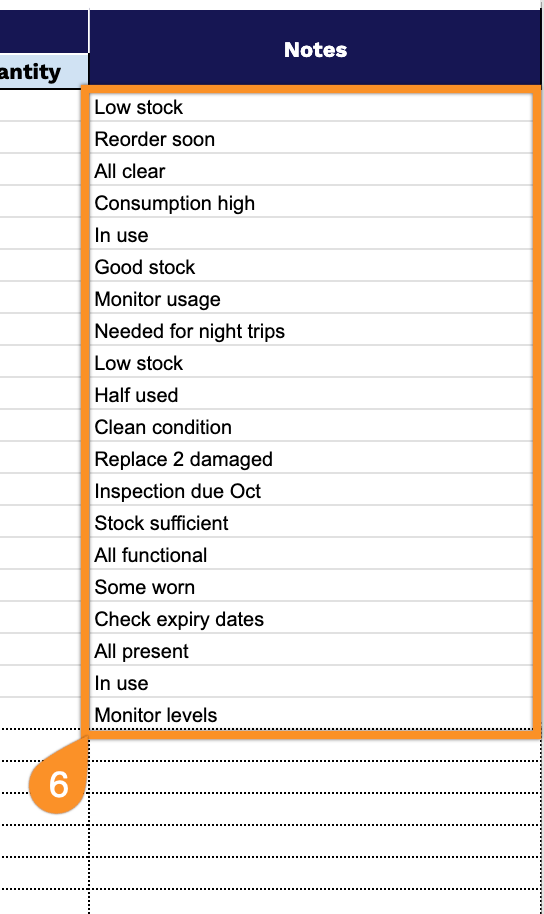Keeping track of your truck fleet shouldn’t feel like a full-time job. Whether you’re running a small delivery business or managing dozens of vehicles, knowing where your trucks are, when they need maintenance, and how much they’re costing you is essential for smooth operations.
This free truck inventory template helps you organize all your information in one place, including vehicle details, maintenance schedules, costs, and more. Available in Google Sheets, Excel, and PDF formats to fit your preferred workflow.
Stop scrambling to find truck paperwork or wondering about upcoming maintenance. Get organized and stay on top of your fleet with this comprehensive tracking solution.
Quick Jump
ToggleWhat Is a Truck Inventory Spreadsheet?
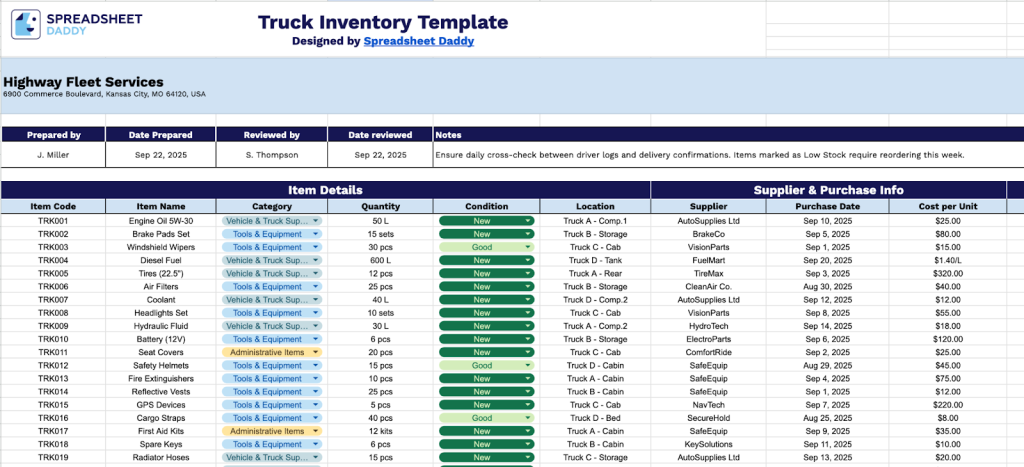
A truck inventory spreadsheet is a digital record that trucking companies use to track and organize information about their fleet vehicles.
Fleet managers use these spreadsheets to monitor vehicle availability, schedule maintenance, track operational costs, and maintain compliance with industry regulations.
Download Spreadsheet Daddy’s Free Truck Inventory Management Spreadsheet
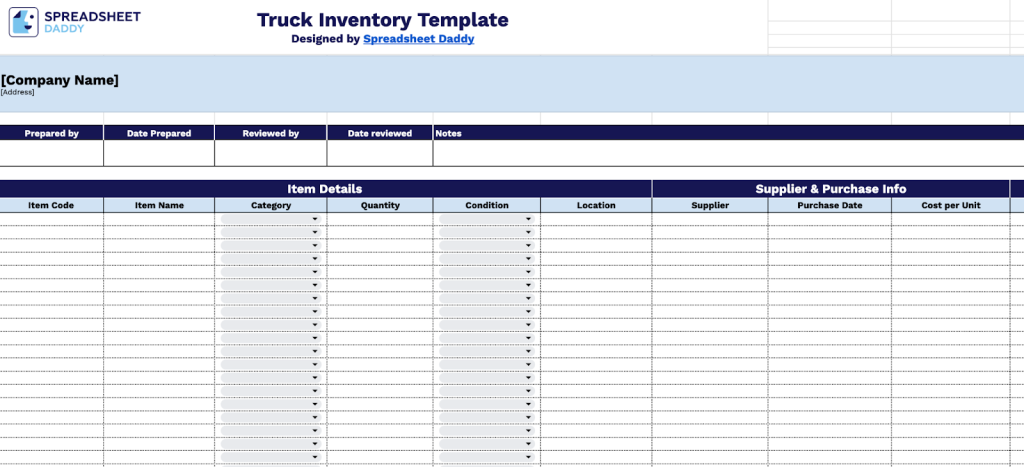
Our truck inventory template provides a comprehensive system for tracking vehicle-related items and supplies.
It’s designed to streamline inventory management for trucking operations by centralizing all relevant tracking information in a single, organized format. Additionally, it can be easily customized by adding or removing columns to match your specific business needs.
What’s included
- Complete item tracking system: Keep tabs on everything with columns for Item Code, Item Name, Category, Quantity, Condition, and Location. You’ll be able to organize your entire truck inventory using unique codes, ensuring you know exactly what you have and where it’s stored.
- Supplier and purchase tracking: Stay on top of your buying with dedicated sections for Supplier details, Purchase Date, and Cost per Unit. You can easily see where everything came from, when you bought it, and how much you paid.
- Delivery and driver management: Track your logistics from start to finish with columns for Date Loaded, Date Delivered, assigned Driver, and Remaining Quantity. You’ll know who’s responsible for what and can follow items through the entire delivery process.
- Professional company header: Customize the top section with your Company Name and Address, plus fields for who prepared the document, when it was created, and who reviewed it. This maintains a professional appearance and ensures proper accountability.
- Flexible notes section: Add essential details, special handling instructions, or observations in the dedicated Notes column. Whether it’s fragile items, customer preferences, or delivery instructions, you’ll have space to record what matters most for each item in your inventory.
How to Use Our Truck Inventory Spreadsheet Template
1. Take control of your truck fleet management by creating a personal copy of this template in Google Sheets or downloading it in Excel or PDF format.
2. Fill in the company name, physical location, and inventory specialist details with the completion timestamp. Include the supervisory name and inspection date, and apply Notes for additional data.

3. Complete the Item Details section by documenting all essential product identification and specification information:
- Item Code: Enter the unique identifier or SKU number assigned to track this specific inventory item.
- Item Name: Provide the complete product name or description for easy identification and reference.
- Category: Specify the product classification or type to organize inventory (goods, tools & equipment, packaging & shipping materials, etc.).
- Quantity: Record the total number of units currently available in the truck’s inventory system.
- Condition: Document the physical state of the items (new, good, fair, needs repair, etc.).
- Location: Indicate the specific storage area, compartment, or zone where the items are positioned within the truck.
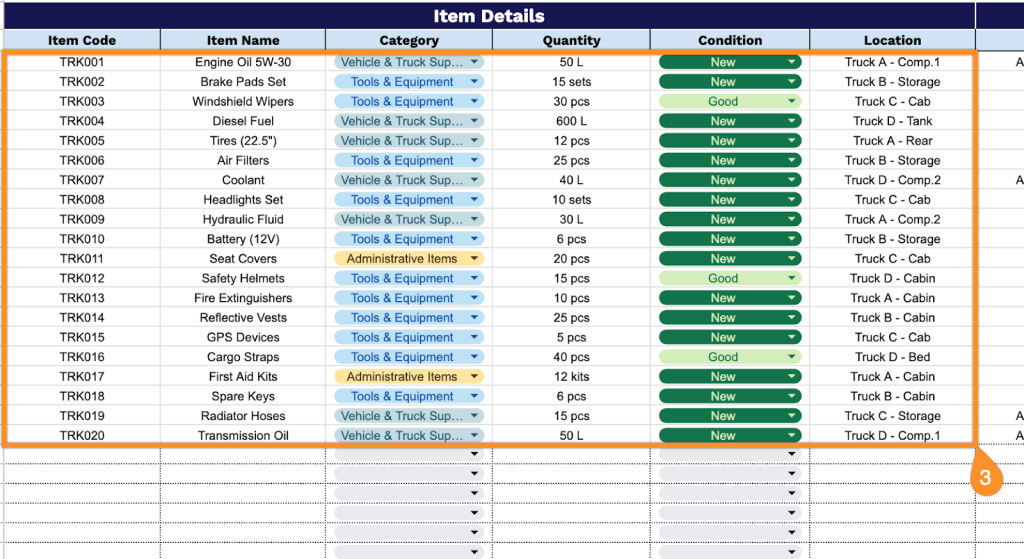
4. Fill in the Supplier & Purchase Information section by recording all vendor and acquisition details:
- Supplier: Enter the complete name of the vendor or company from whom the items were purchased.
- Purchase Date: Record the date when the inventory items were initially acquired or received from the supplier.
- Cost per Unit: Document the individual price paid for each item to track investment and calculate margins.
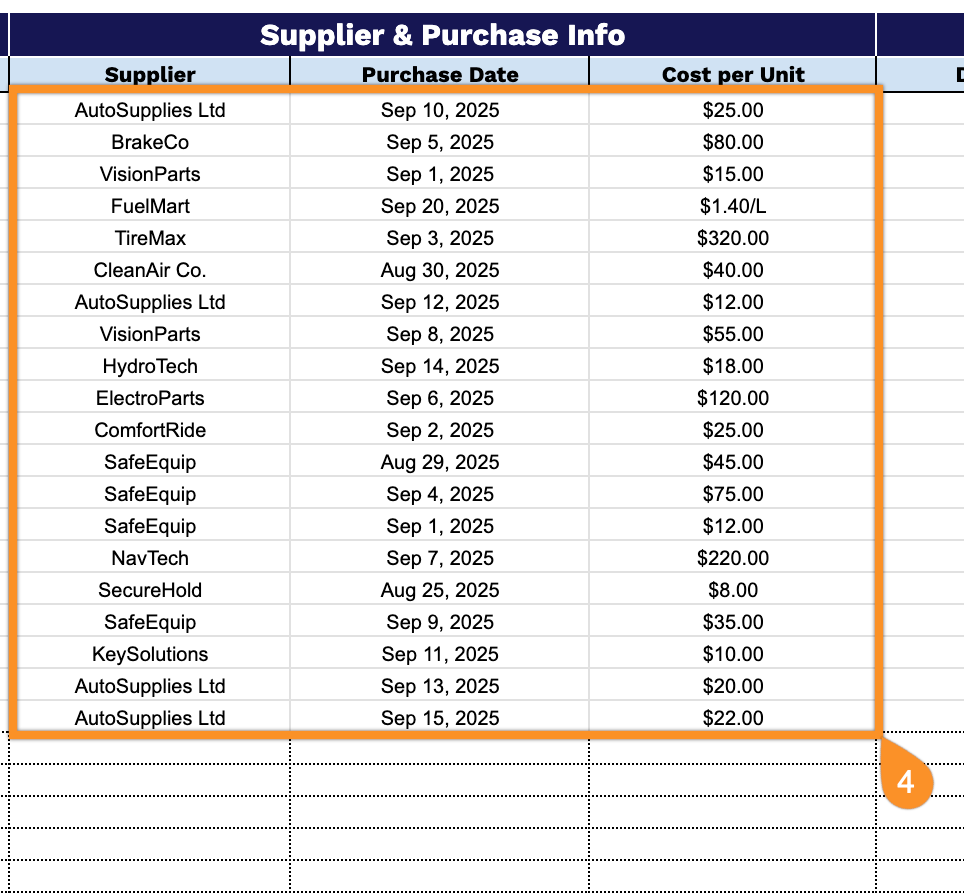
5. Complete the Tracking section by maintaining accurate delivery and transportation records:
- Date Loaded: Record when the items were initially placed into the truck’s inventory system.
- Date Delivered: Document when the items were successfully transported to their final destination.
- Driver: Enter the name of the assigned driver responsible for transporting these specific inventory items.
- Remaining Quantity: Track the current number of units still available after any deliveries or distributions have been made.
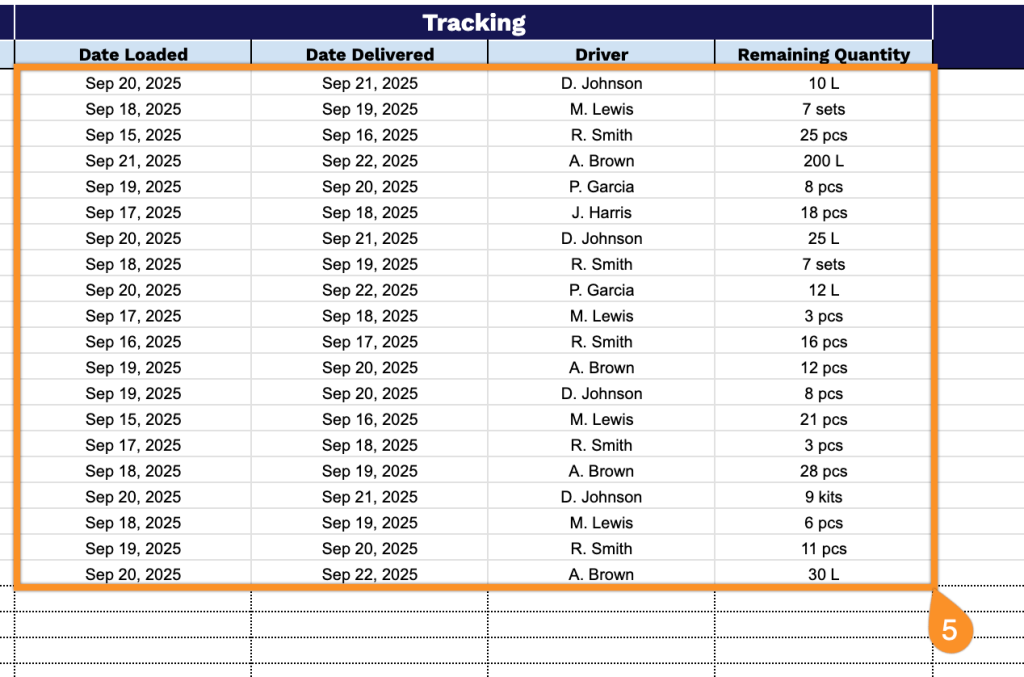
6. Complete the Notes section by entering other essential details.
